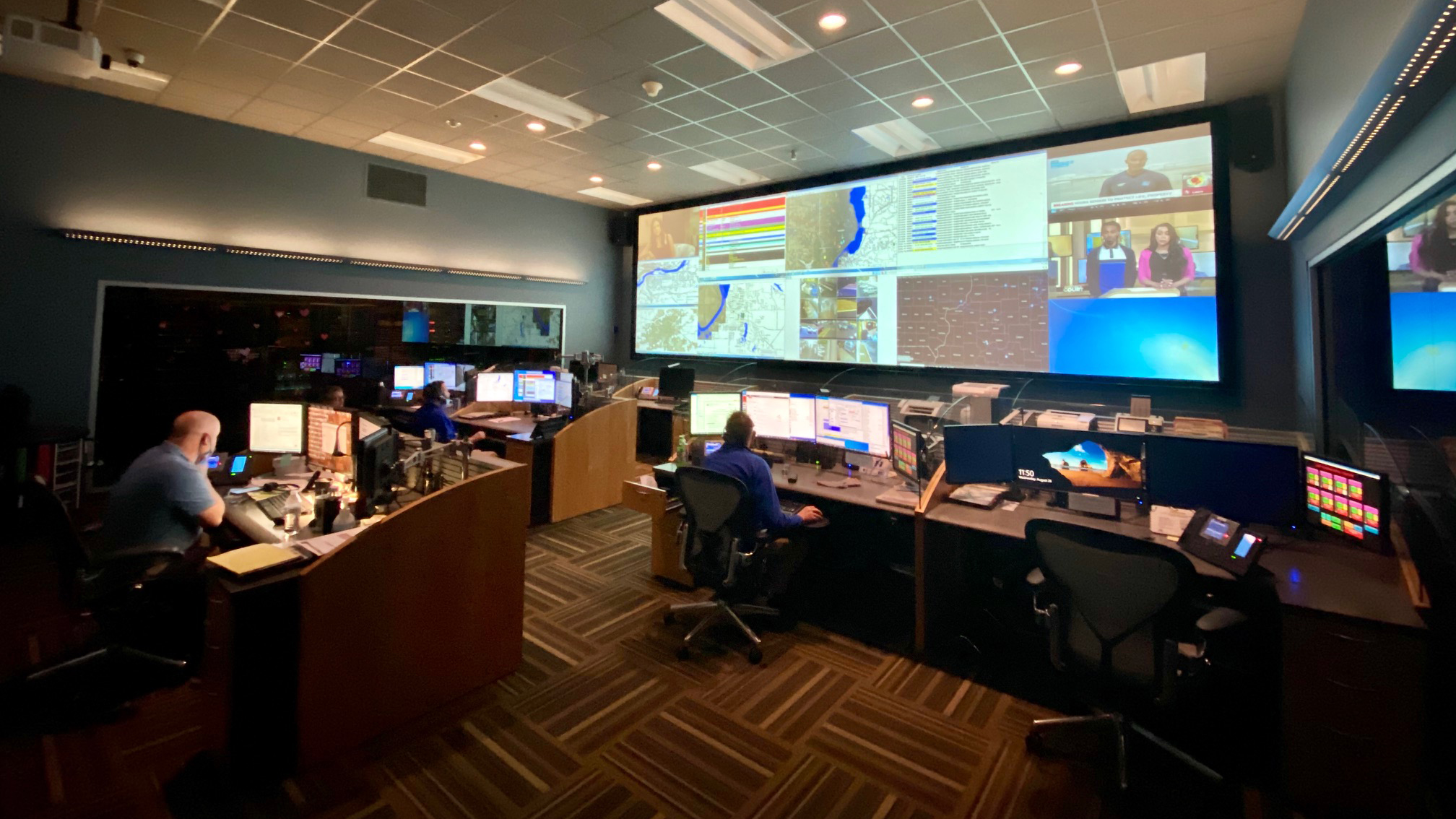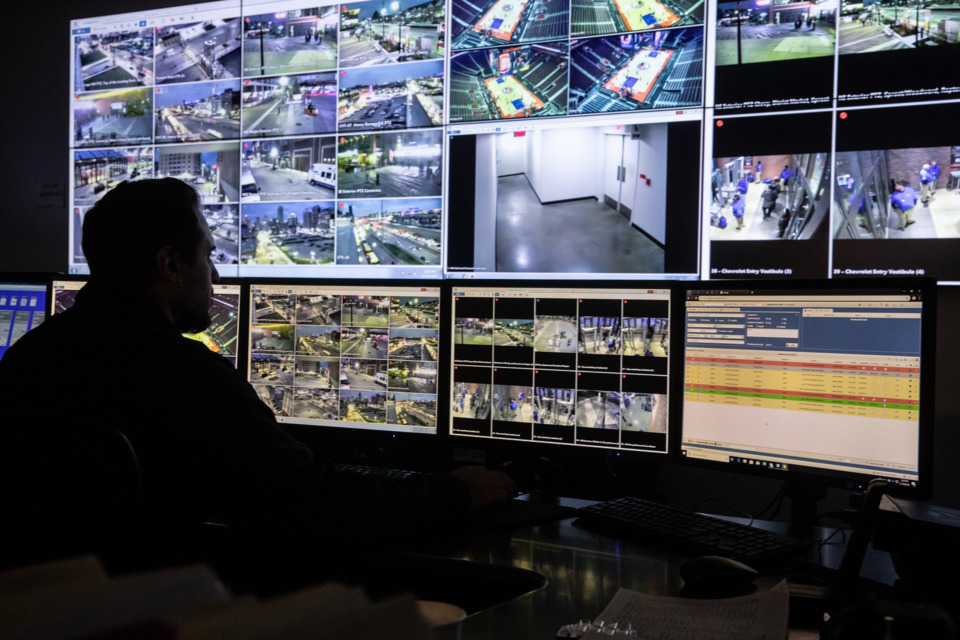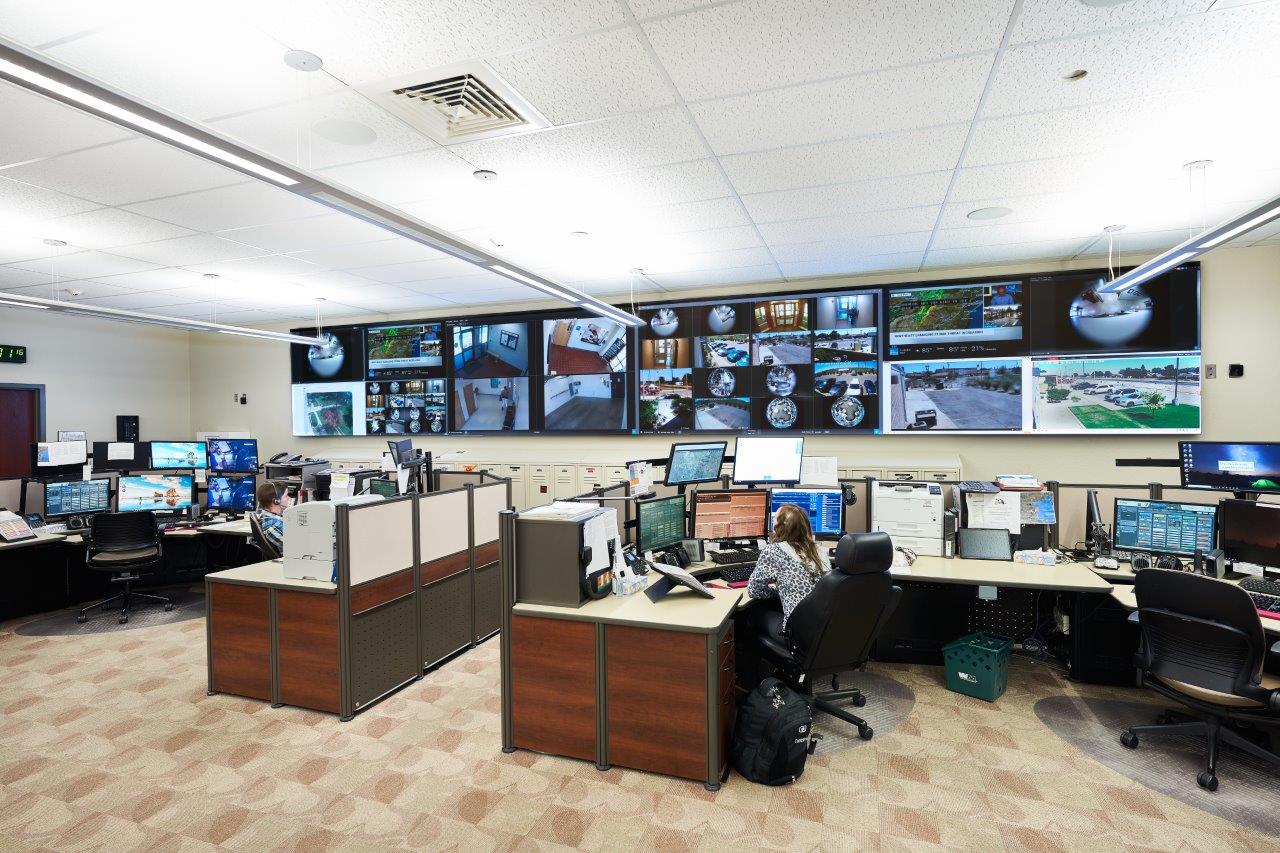Optimizing Decision-Making
Trends and Tech Keeping Control Rooms Running

Command and control rooms are managing and distributing more information than ever, with a need to seamlessly integrate a diverse range of systems. What challenges are emerging and what might command and control rooms look like in a post-pandemic future?
“In many ways, COVID-19 only exacerbated or accelerated what was already going on in performance media in control rooms. Highly proprietary, local-only control room solutions did not make the grade. Organizations that had begun the steady migration to performance media over IP—and that understood ways to leverage that within facilities as well as how to securely engage resources outside given physical locations—were much more adaptive during the pandemic,” explained Samuel Recine, Matrox’s vice president of sales, AV/IT Group, Americas and Asia Pacific. “At present, customers are ultimately best served by software-defined workflows, so the market continues to be pushed toward standards-based and interoperable hardware and software products. Edge devices need to be well behaved ingredients on AV over IP networks. Hardware and software products also need to be platforms so they can play nice with other things needed in control room operations.”
Software-only or software-dominant products are already center stage in unified communications and control rooms, stated Recine. The market is also fusing products from multiple areas to serve the needs of their control room operations, including IT, pro AV, broadcast and more, he noted.
“It is now possible to assemble capabilities in numerous different ways. The market is maturing and the discussion has drifted away from proving that the highest levels of performance media can be achieved on IP and now onto increased usefulness and capabilities of new, emerging AV/IT hybrid infrastructures.”
While Recine said that getting any data to and from decision-makers in command and control is mostly a problem solved, he believes the next challenge for command and control rooms will be the amount of information being processed.
AI Enabled-Future
“Distributed control rooms in multiple physical locations can now share assets, and high-performance media is supportable on an unprecedented number of nodes and at global distances. The next bottleneck is information overload. AI possesses exceptional potential as a human decision-making enhancement. In the not too distant future, AI-assisted control room decision-making will become a top-shelf topic,” said Recine.
AI is already being explored in the defense space for coordinating complex military and human networks, as well as transportation for air traffic control rooms. But Recine believes the use of AI in this way will go mainstream over the next decade. For instance, in 911 dispatch centers.
A daily selection of the top stories for AV integrators, resellers and consultants. Sign up below.
“Natural language processing will evolve enough to allow AI to help 911 call-takers. Based on what the panicked callers are saying, AI will spit out relevant questions for the human 911 dispatchers to ask to maximize the precious few seconds they have on the phone. The gains in efficiency and quality of information will [transfer] directly into better public safety response,” he added.
While some sectors may be slow to adopt machine learning and AI, command and control rooms seem to be embracing the potential benefits to operation and efficiency.
“The use of these technologies has at least two areas of impact on control rooms: one, on the types and volume of data that can be visualized in the control room, and two, in the way that responses and actions to visual data are increasingly directed or escalated by software algorithms,” said Steve Seminario, vice president of product development at Planar.
[Planar Expands U.S. Government Division]
There is now more data to visualize in different ways, and there is greater ability for software to analyze and recognize patterns in visual data that can be acted on directly or by escalation to human decision-makers, noted Seminario. “The software content and analytical horsepower in any control room has increased dramatically in recent years and makes visual content even more vital to important decisions.”
RGB Spectrum vice president of marketing Andy Thompson is also witnessing a growing interest in AI. “We’re seeing AI, machine learning, and big data typically presented in the control room from dedicated host computer systems that need to share complex visualizations without adding additional software to the host. This is driving the deployment of devices like XtendPoint KVM over IP that enable remote keyboard video and mouse control with no changes to the host software.”
Robust Distribution
Another trend, and perhaps a more obvious one, is the move toward AV over IP. “We are increasingly seeing deployment of IP networks in command and control rooms, for both KVM over IP extension inside the control room and for extending situational awareness beyond the walls of the control room with enterprise-class AV over IP. The goal being improved situation awareness, better decision-making, and faster response,” Thompson added.
[The Integration Guide to AVoIP]
“Inside the control room, we’re seeing XtendPoint KVM over IP extenders used to provide operators with control of remote servers at their desktop, and using the same solution to share information with decision-makers on the front-of-room video wall. Zio Enterprise Class AV over IP enables control room sources to be shared across WANs to other control rooms, as well as mobile devices,” shared Thompson.

The need for seamless data sharing and flexible display capability has also become paramount, said Jon Litt, senior manager at Christie’s U.S. government solutions division.
“Smaller groups within emergency operation centers (EOCs) often need their own collection points for data, separate from the main screen, to allow them to work on their own respective challenges. It is also important that these groups can instantly share information with the wider team—and the primary display—when necessary,” Litt said.
“This is where effective processing and switching comes in, allowing users to view and interact with AV sources, as well as collaborate. Being able to manipulate displays to show relevant sources and data in a digestible format is key,” he added. ”An effective system is one that the average user can quickly learn how to use. Control rooms now need a robust distribution solution allowing signals to be distributed to any on-site display with low latency. More organizations are using AV over IP solutions over conventional switching systems for handling the transportation and processing of virtually uncompressed, zero-frame latency, artifact-free video content.”
Power and Flexibility
For integrators thinking about choosing the right displays for an EOC or control room, visual acuity is hugely important.
“The ability for a person to intelligibly read data essentially boils down to mathematics: the size of the display and the distance from which the display is going to be viewed,” said Litt. “Exactly what content or source is being viewed has a lot to do with that. If a person is at the end of that control room, can they look at that display and understand what it is they are reading? If you’re looking at a power grid or a transit authority, the ability to look at the big picture and still read the content for that particular symbol is exceptionally important. Therefore, you’re going to need to blow up the image larger to allow the individual to read it at that distance. A 1080p resolution can be suitable for many control rooms and EOC displays, but there are applications where 4K, and potentially 8K in the future, will be more prevalent and necessary.”

Command and control room personnel are increasingly looking for flexible solutions that allow them to change the layout or size of content being displayed.
“Video wall solutions that offer front serviceability and simplified maintenance are gaining popularity as customers look for products that are easy to use and maintain, and can reduce downtime often associated with teardowns or repairs—especially in mission-critical environments where downtime is not an option. This is also fueling demand for displays designed for 24/7 use and engineered with built-in redundant power supplies to ensure operations are failsafe and continuous,” said Seminario.
In the future, control rooms will require reliable and high-performing solutions that optimize decision-making and can manage the level of data they need in these critical environments. Even with leaps in technology, some things never change.
Ledetta Asfa-Wossen is an education, technology, and business journalist.
